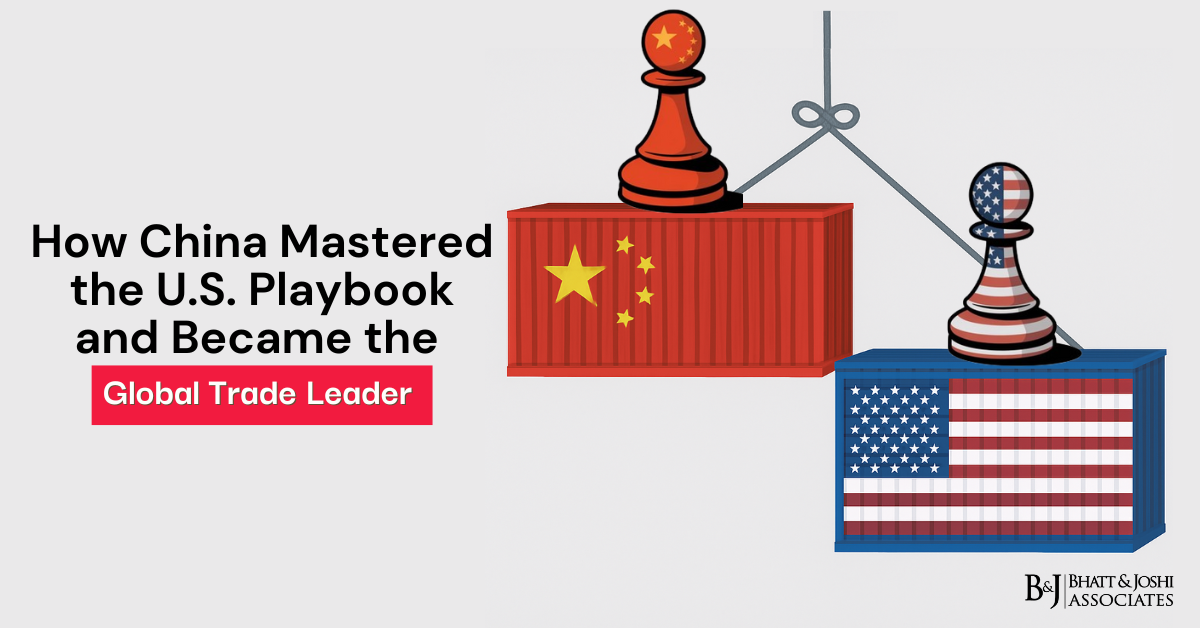Introduction
China’s rise to global trade leadership represents one of the most remarkable economic transformations in history. By carefully studying and adapting the strategies that made America the world’s dominant economy in the 20th century, China has engineered its own path to economic supremacy. This process, spanning over four decades, demonstrates not just China’s ability to learn from others’ successes but also its capacity to innovate and adapt these lessons to its unique circumstances and objectives.
The story of China’s economic ascent is not simply one of imitation but of strategic adaptation and innovation. While drawing inspiration from the American economic playbook, China has developed its own distinctive approach to economic development and trade leadership, combining state direction with market mechanisms in ways that challenge traditional Western economic assumptions.
Learning from American Success
China’s study of American economic success began in earnest during Deng Xiaoping’s leadership in the late 1970s. Chinese policymakers carefully analyzed how the United States had built its economic empire after World War II, paying particular attention to several key elements: the creation of international institutions, the use of financial power, the development of technological capabilities, and the establishment of global supply chains.
The Chinese leadership recognized that America’s post-war economic dominance rested not just on industrial might but on a comprehensive system of international institutions, financial mechanisms, and trading relationships. They observed how the United States had used the Bretton Woods institutions, the Marshall Plan, and various trade agreements to create a global economic order that served its interests while promoting allied prosperity.
Strategic Economic Planning
Unlike the United States’ relatively hands-off approach to economic development, China adopted a more directed model of state capitalism. The Chinese government maintained central control over key economic levers while gradually introducing market mechanisms. This hybrid approach allowed China to harness the efficiency of markets while ensuring that economic development served national strategic objectives.
Five-year plans provided the framework for economic development, with each plan setting specific targets for industrial development, technological advancement, and economic reform. This systematic approach to economic planning, combined with the state’s ability to mobilize resources and direct investment, has proven remarkably effective in achieving strategic objectives.
Manufacturing Dominance
China’s emergence as the “world’s factory” was no accident but the result of careful planning and strategic investment. Beginning with labor-intensive industries in special economic zones, China gradually moved up the value chain, developing increasingly sophisticated manufacturing capabilities. The government provided crucial support through infrastructure development, workforce training, and financial incentives for foreign investment.
This manufacturing strategy went beyond simply offering low-cost labor. China developed comprehensive industrial ecosystems, combining production facilities with supply chains, logistics networks, and supporting services. The scale and efficiency of these manufacturing clusters created competitive advantages that proved difficult for other nations to match.
Global Economic Integration
China’s approach to global economic integration demonstrates a sophisticated understanding of how economic power translates into global influence. While the United States had used the Marshall Plan and various aid programs to build economic partnerships, China developed its own mechanisms for economic engagement, particularly with developing nations.
Trade relationships were carefully cultivated through a combination of market access, investment, and development assistance. China’s strategy often involved trading market access for technology transfer, allowing it to rapidly develop domestic capabilities in key industries while maintaining control over its vast domestic market.
The Belt and Road Revolution
The Belt and Road Initiative (BRI) represents China’s most ambitious attempt to reshape global trade patterns. This massive infrastructure and investment program, spanning Asia, Europe, and Africa, demonstrates China’s understanding of how physical infrastructure and economic ties can create lasting strategic advantages.
Unlike America’s post-war economic initiatives, which focused primarily on rebuilding allied economies, the BRI aims to create new trade corridors and economic relationships that bypass traditional Western-dominated routes and institutions. The initiative combines infrastructure development with financial assistance, technological cooperation, and cultural exchange, creating comprehensive economic partnerships.
Financial and Monetary Strategy
China has studied how the United States used financial power to enhance its global influence and has developed its own financial tools and institutions. The establishment of the Asian Infrastructure Investment Bank (AIIB), the New Development Bank, and various bilateral currency swap arrangements demonstrates China’s effort to create alternatives to Western-dominated financial institutions.
The internationalization of the renminbi, while still in its early stages, shows China’s understanding of how monetary power contributes to economic leadership. While not directly challenging the dollar’s global role, China is gradually creating alternative financial channels that reduce dependence on U.S.-controlled systems.
Technological Advancement
China’s push for technological leadership through programs like Made in China 2025 reflects its understanding of how technological superiority underpinned American economic power. By combining massive research and development investment with policies to acquire and develop advanced technologies, China aims to lead in crucial fields like artificial intelligence, quantum computing, and renewable energy.
The development of indigenous technological capabilities has become a national priority, supported by substantial government funding, preferential policies, and strategic industry guidance. This approach differs from America’s more market-driven innovation system but has proven effective in rapidly developing capabilities in targeted sectors.
Future Prospects and Implications
China’s mastery of economic development strategies raises important questions about the future of global trade leadership. While China has successfully adapted many elements of the American economic playbook, it faces significant challenges, including demographic pressures, environmental constraints, and growing international resistance to its economic practices.
The sustainability of China’s model of state capitalism and its ability to maintain rapid technological advancement while controlling information flows remain open questions. However, the comprehensive nature of China’s economic strategy and its demonstrated ability to adapt suggest continued success in expanding its global economic influence.
Conclusion: China’s Trade Leadership and Global Economic Shifts
China’s rise to global trade leadership demonstrates both the effectiveness of learning from historical examples and the importance of adapting strategies to current circumstances. While China has successfully mastered many elements of the American economic playbook, it has done so in ways that reflect its own political system and development objectives.
The question of whether the United States can compete effectively with China’s economic model depends largely on America’s ability to adapt its own economic strategies while maintaining its traditional strengths in innovation, entrepreneurship, and institutional flexibility. Success in this competition will require not just countering China’s initiatives but developing new approaches that leverage American advantages in a changed global economy.
The future of global trade leadership may not be determined by either nation’s ability to dominate but by their capacity to coexist and compete while maintaining the benefits of economic integration. Understanding how China mastered and adapted the American playbook provides crucial insights for policymakers seeking to navigate this new economic landscape.China’s Rise in Global Trade: How It Mastered the U.S. Playbook to Become the Global Trade Leader














